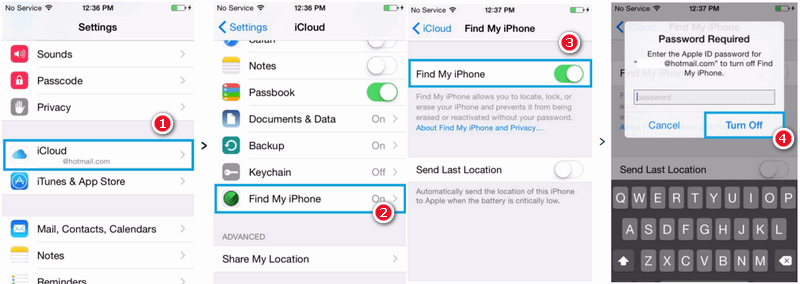

I covered this feature in more detail here when it made its debut. The device owner won't even know they're helping you find your lost device.
#Turn find my iphone off mac
For example, if you lose your iPhone and mark it as lost in the Find My app (more on that process in a minute), Apple will use the Find My service on any iPad, iPhone or Mac to locate your iPhone, even if it's not connected to the internet. Make sure that the switch next to Find My iPhone is on, and while you're there, make sure the switches next to Find My network and Send Last Location are on as well.Īs a refresher, Apple's Find My network will crowdsource the location of a device marked as lost. On your iPhone, open the Settings app and tap on your name at the top of the screen.

It should be enabled by default, and you'd have to go out of your way to disable it, but it's always a good idea to double-check right now. There's more than just a switch to turn on Find My that you'll want to pay attention to.Īfter setting a passcode, double-check that Find My is turned on. And after a few days, the extra step will become part of your routine and you won't even notice. Scanning your finger or letting Face ID do its magic is a minor inconvenience.

Secure your device by opening Settings > Face ID (or Touch ID) & Passcode and follow the prompts. the list goes on.ĭo you really want a random stranger going through all of that? Just think of all the information on your phone: banking apps, private conversations, the location of your home and office, contacts, emails, photos. Setting a passcode and using your face or fingerprint to protect all of the information on your phone is a vital part of keeping your personal information secure. Some people view using Face ID or Touch ID as an unnecessary step when using an iPhone.


 0 kommentar(er)
0 kommentar(er)
